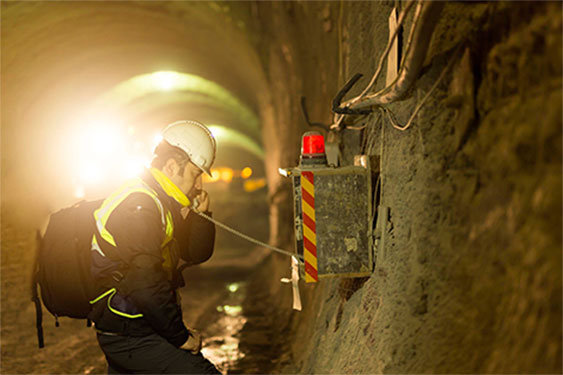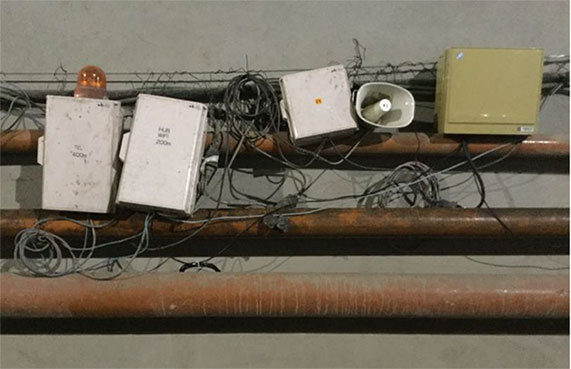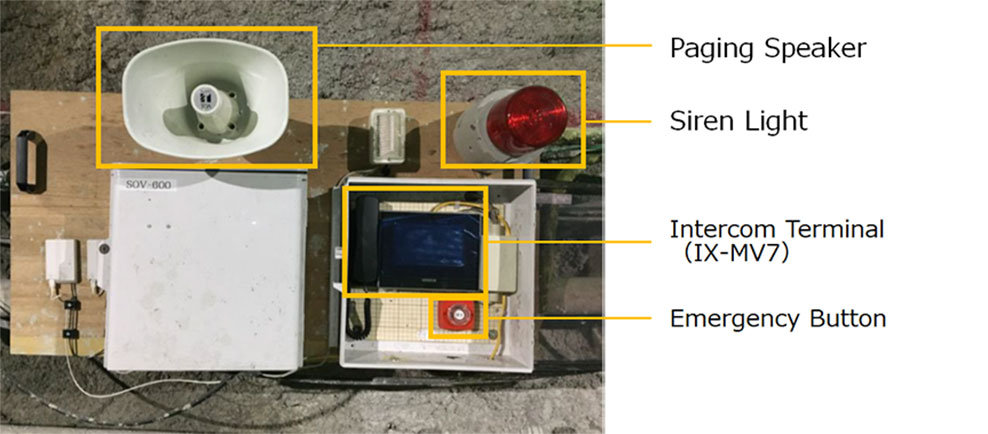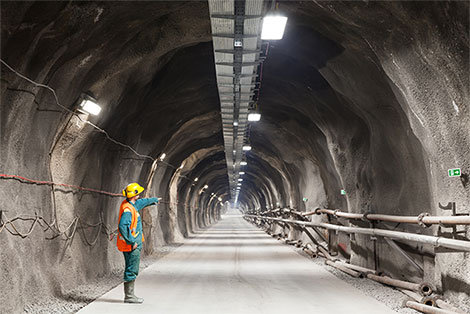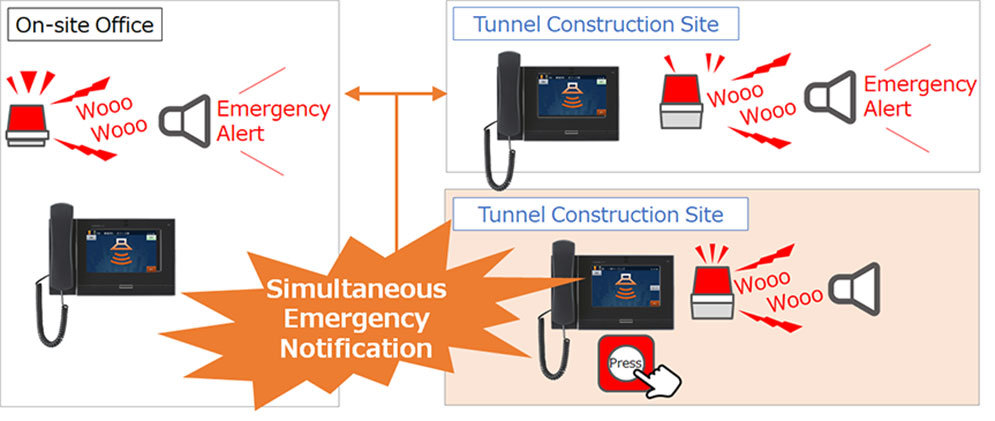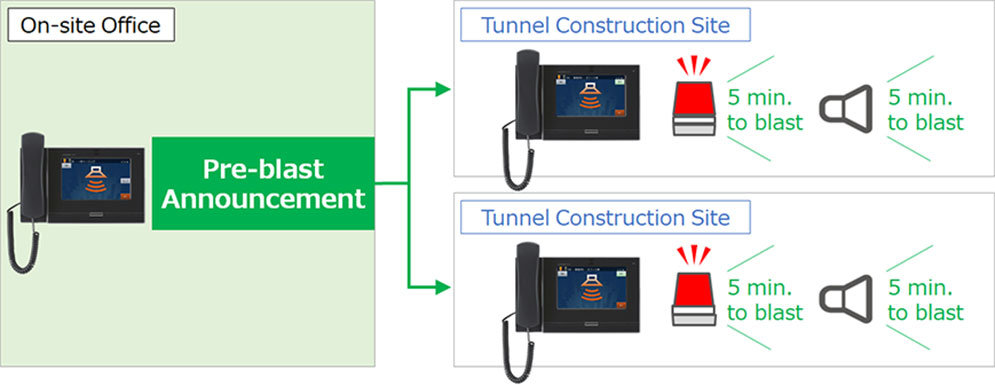Challenges
Traditionally, emergency communication for workers in tunnels, mines, and underground construction sites primarily relied on fixed telephone systems and emergency broadcast facilities. However, in the case of long-distance construction, challenges arose with the delicate handling of low-voltage cables and the protection of exposed wiring. Recently, communication networks in such challenging environments are increasingly built utilizing ICT, and in turn had led to the integration of IP technology, simplifying wiring and improving maintenance.
Image of conventional emergency communication equipment installation: Complex wiring poses challenges in construction and maintenance.
Solving Challenges at Excavation Sites with the IX System
The following is a case study in Japan, where AIPHONE’s IX system resolved wiring challenges at a tunnel construction site.
The use of communication equipment at tunnel construction sites is limited to the construction period. Therefore, not only installation but ease of removal is also essential. The IX system is compatible with IP networks and provides simplified construction with a single LAN cable. In this case, intercom terminals (IX-MV7) were installed at intervals of 300m from the tunnel entrance inside the pits, on-site office, and surveillance stations, realizing a single system integrating emergency buttons, sirens, and speakers for paging.
The following is a case study in Japan, where AIPHONE’s IX system resolved wiring challenges at a tunnel construction site.
The use of communication equipment at tunnel construction sites is limited to the construction period. Therefore, not only installation but ease of removal is also essential. The IX system is compatible with IP networks and provides simplified construction with a single LAN cable. In this case, intercom terminals (IX-MV7) were installed at intervals of 300m from the tunnel entrance inside the pits, on-site office, and surveillance stations, realizing a single system integrating emergency buttons, sirens, and speakers for paging.
The intercom terminals are primarily used for “emergency communication,” “announcements before tunnel blasting,” and “communication between inside the tunnel and the on-site office.”
Moreover, tunnel construction and mining sites faces challenges of temporary delays caused by unexpected issues or mining equipment malfunctions. One such accident at mining excavation site occurred in 2010, when there was a collapse at the Copiapó mine in Chile. Following the accident, communication with the workers was interrupted for an extended period, resulting in a time-consuming process for confirming their survival. Additionally, in tunnel construction projects in Malaysia, there have been instances of unforeseen sinkholes or delays in the construction schedule due to gas eruptions or springs.
These is just an example, but in tunnel, mine, and underground construction projects, there is a possibility of construction delays due to unforeseen accidents. In such emergency situations, it is crucial to quickly and accurately convey information. With IX system, which can link multiple sites, communication with workers and management at other locations can be facilitated using IP networks. This allows quickly alerting dangers, thereby ensuring the safety of workers and potentially minimizing the impact on the construction schedule.
The IX System featured here is ONVIF compliant, allowing flexible integration with third-party products. This ensures stable communication even in tunnel, mining, and underground construction sites, facilitating smooth coordination between work sites. In addition, the IX system offers equipment with IP65 or IP54 protection grades, adhering to international standards for dust and water proofing. This lineup of devices enables stable operation in demanding work environments.
Next, we will discuss the three benefits IX system brings to tunnel, mining, and underground construction projects.
